Clean Eating Grocery List (Unprocessed Foods)
If shopping for healthy foods is overwhelming to you, then this clean eating grocery list is exactly what you need. Learn what to stock up on, how to read labels, money-saving tips, pantry staples you need, which clean eating snacks to buy, and more. I’ve also included a free downloadable PDF that you can save or print to take with you!
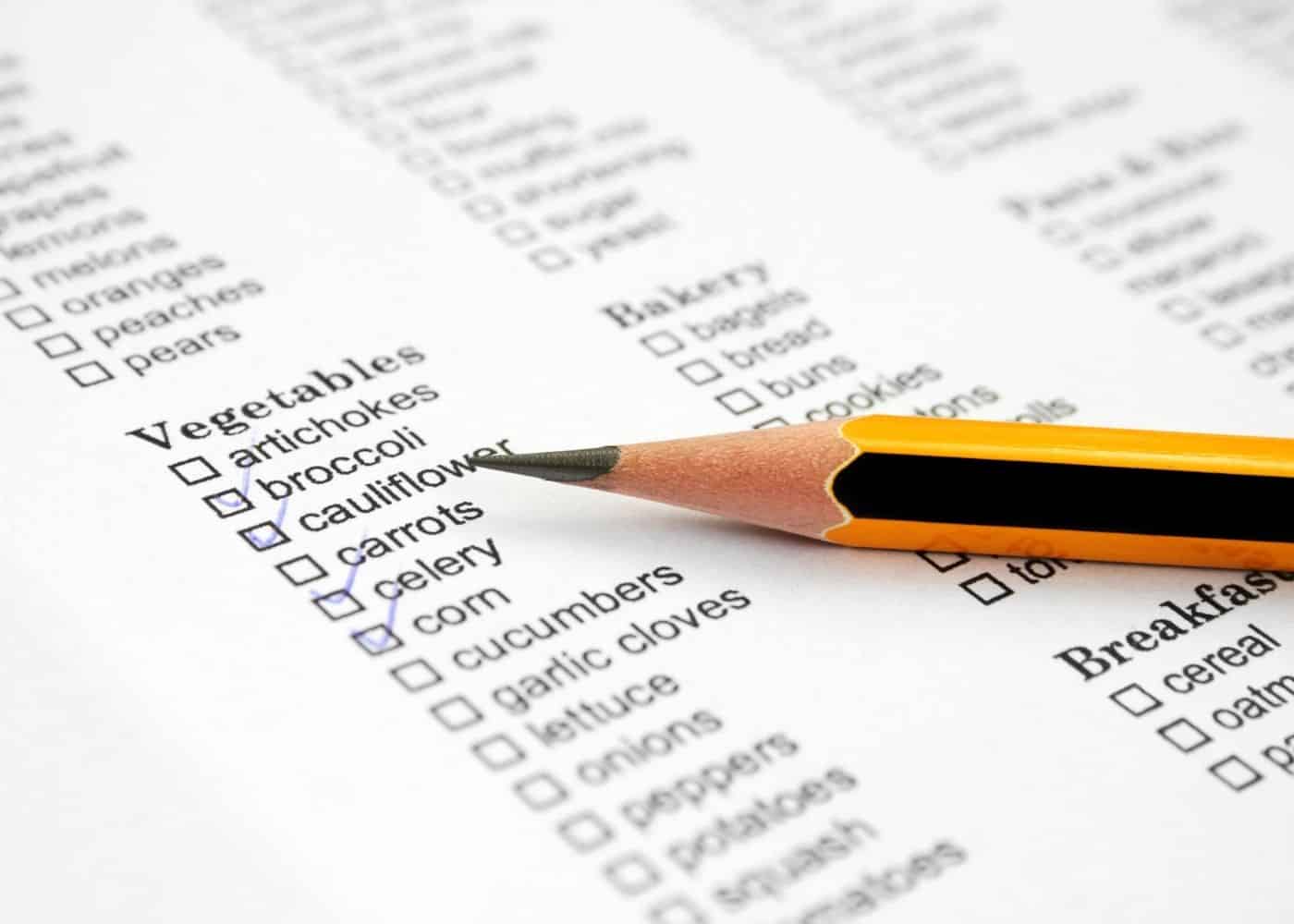
Whether you’re new to clean eating or you’re a pro, I hope this healthy grocery list is helpful!
I share the major categories of foods to include on your shopping list, as well as a printable version that you can take to the store with you.
Clean Eating Shopping List
When embarking on a clean eating journey, it’s essential to know what items to stock up on.
A healthy grocery food list primarily consists of fresh fruits and vegetables from the produce section, whole grains, lean proteins, and healthy fats. These items are free from additives, preservatives, and artificial ingredients, ensuring that one consumes only nutrient-dense options for better health and well-being.
This list will be a helpful guide to navigating your clean eating journey for optimal health. Start with selecting some recipes or meal ideas and build your shopping list based on what you have planned. This helps reduce impulse purchases and helps you stick to your healthy choices.
For any packaged foods, be sure to read the ingredient list and nutrition facts label.
Fruits
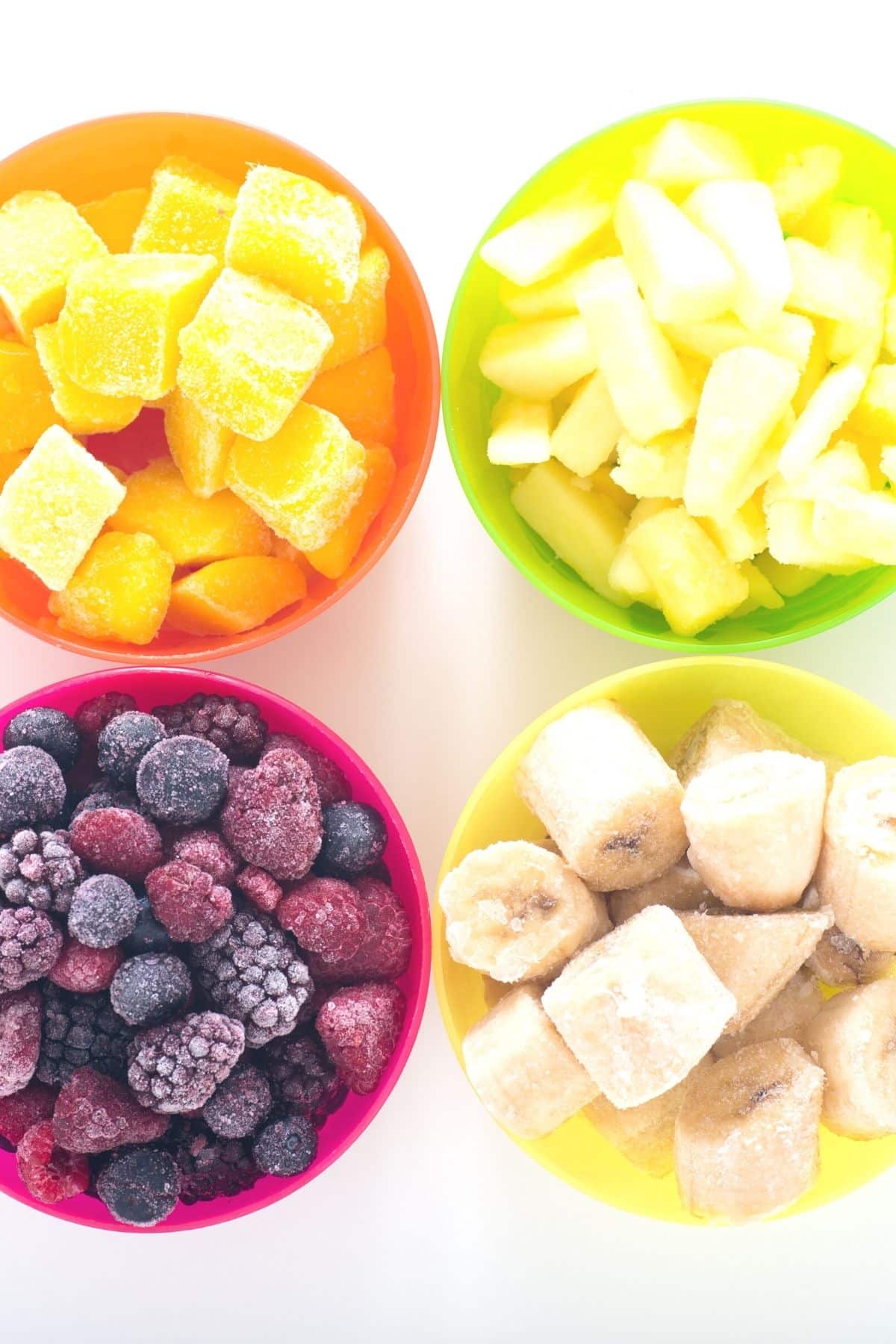
Unless you want to, there is no need to buy all fruit organic. In general, if you eat the skin, buy organic. Conventional is safe for fruits like bananas and avocados, which have a thick skin that you remove.
Check the EWG for more information on which fruits are most commonly sprayed with pesticides.
To save money, avoid pre-sliced fruits; buy in season when possible; and, purchase frozen if using in dishes like smoothies.
Here is a solid list of fruits to consider on your next grocery run:
- Apples
- Apricots
- Avocados
- Bananas
- Blackberries
- Blueberries
- Cherries
- Grapefruit
- Grapes
- Green Apples
- Kiwi
- Lemon
- Lime
- Mango
- Melons
- Nectarines
- Oranges
- Papaya
- Peaches
- Pears
- Persimmons
- Pineapples
- Pitted prunes
- Plums
- Pomegranates
- Raspberries
- Strawberries
- Tangerines
- Watermelon
Vegetables
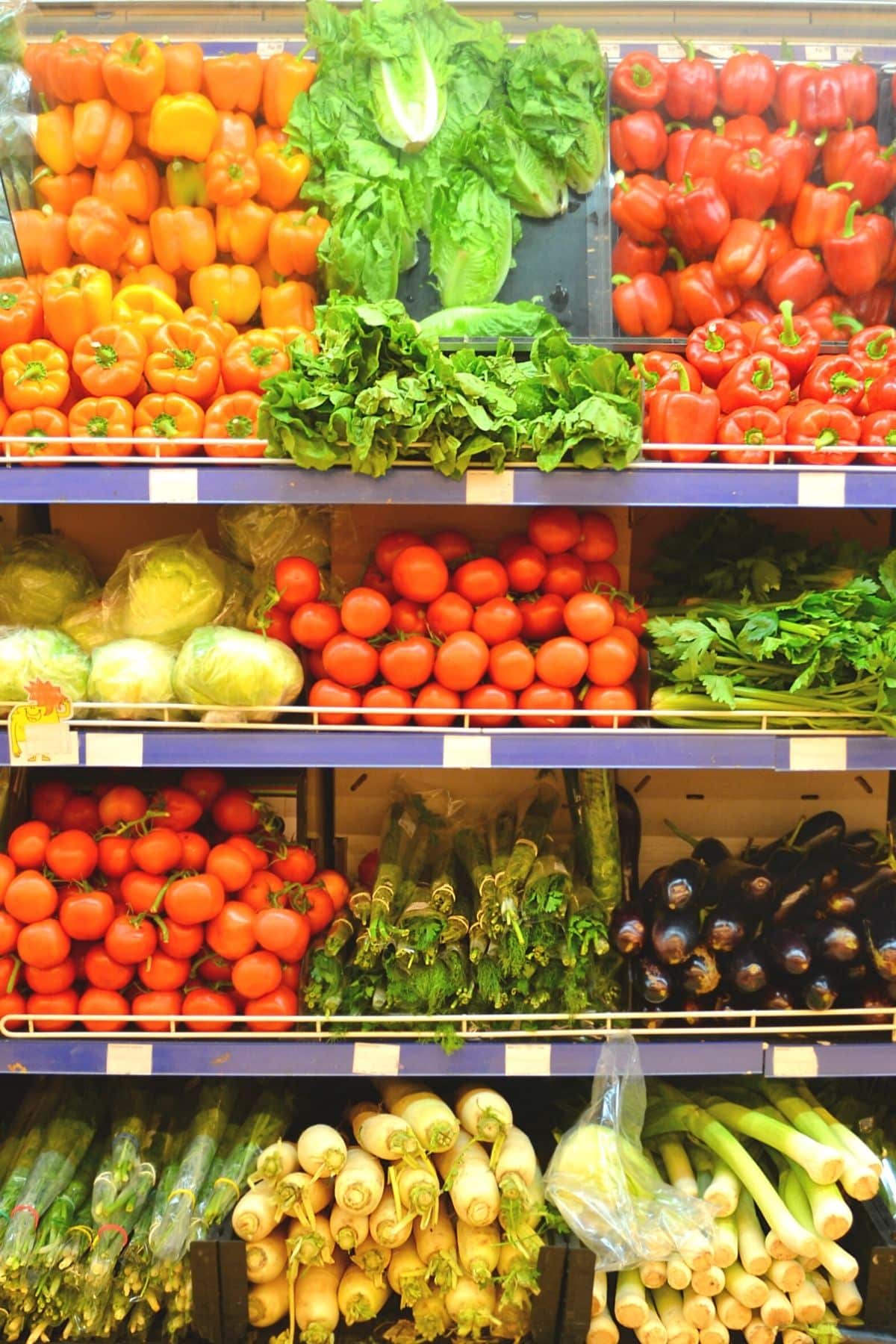
Follow the same wisdom with vegetables when choosing organic or conventional.
For example, leafy greens should be purchased organic, while root veggies like onions are safe to purchase conventional. The EWG provides a comprehensive list.
Frozen options like frozen broccoli, green beans, and butternut squash are great ways to save money. Canned options like canned pumpkin puree are also a good way to save money.
Frozen vegetables are less forgiving in texture than frozen fruit, however, so budget accordingly.
Also, if you have picky eaters in the house, you might want to refer to my list of the Best Vegetables for Picky Eaters.
These vegetables are all great sources for your clean eating kitchen:
- Artichokes
- Arugula
- Asparagus
- Bell peppers
- Broccoli
- Brussel sprouts
- Butternut squash
- Cabbage
- Carrots
- Cauliflower
- Cucumbers
- Fennel
- Garlic
- Ginger
- Green beans
- Kale
- Mushrooms
- Okra
- Onions
- Peas
- Peppers
- Pumpkin
- Radishes
- Romaine lettuce
- Spaghetti squash
- Spinach
- Sweet Potatoes
- Tomatoes
- Yams
- Zucchini
Beans, peas, and legumes
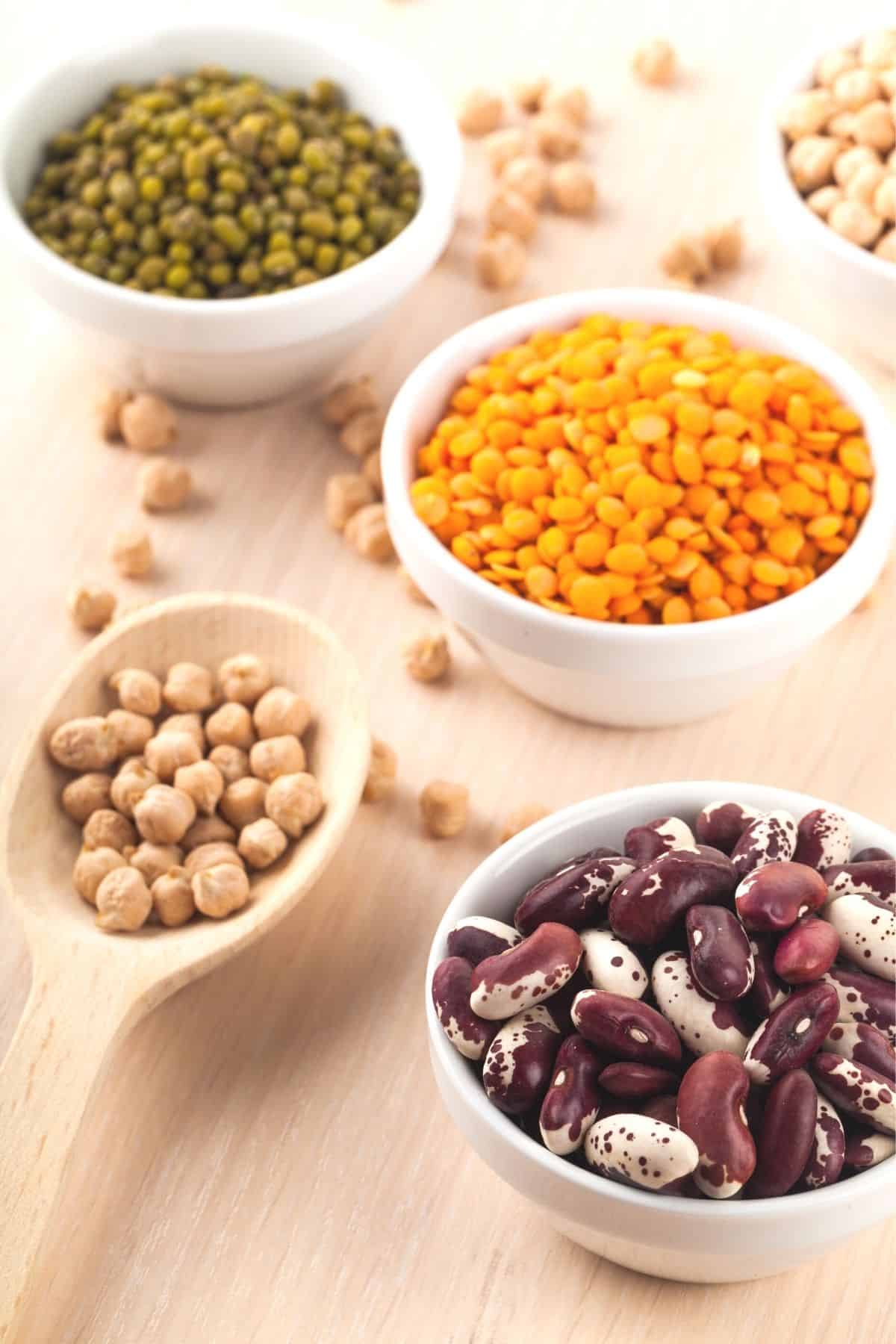
Beans, peas, and legumes are often your least expensive grocery items, so stock up for plant-based dinners! Buying in bulk is a great way to save money.
Of these items, peanuts and edamame are the only ones that should really be purchased organic. Peanuts, especially, are best purchased in an organic Valencia variety to reduce mold and pesticide exposure.
Canned, frozen, and dried varieties are great ways to buy beans and lentils.
For the greatest nutrient density, search for “sprouted” varieties. These are considered easier on the digestive system and more bioavailable, though they’re not necessary.
Beans, peas, and legumes to add to your grocery list:
- Adzuki beans
- Black beans
- Black-eyed peas
- Cannellini beans
- Edamame
- Garbanzo beans
- Great northern beans
- Kidney beans
- Lentils
- Mung beans
- Navy beans
- Peas
- Peanuts
- Pinto beans
- Red beans
Animal & Plant Proteins
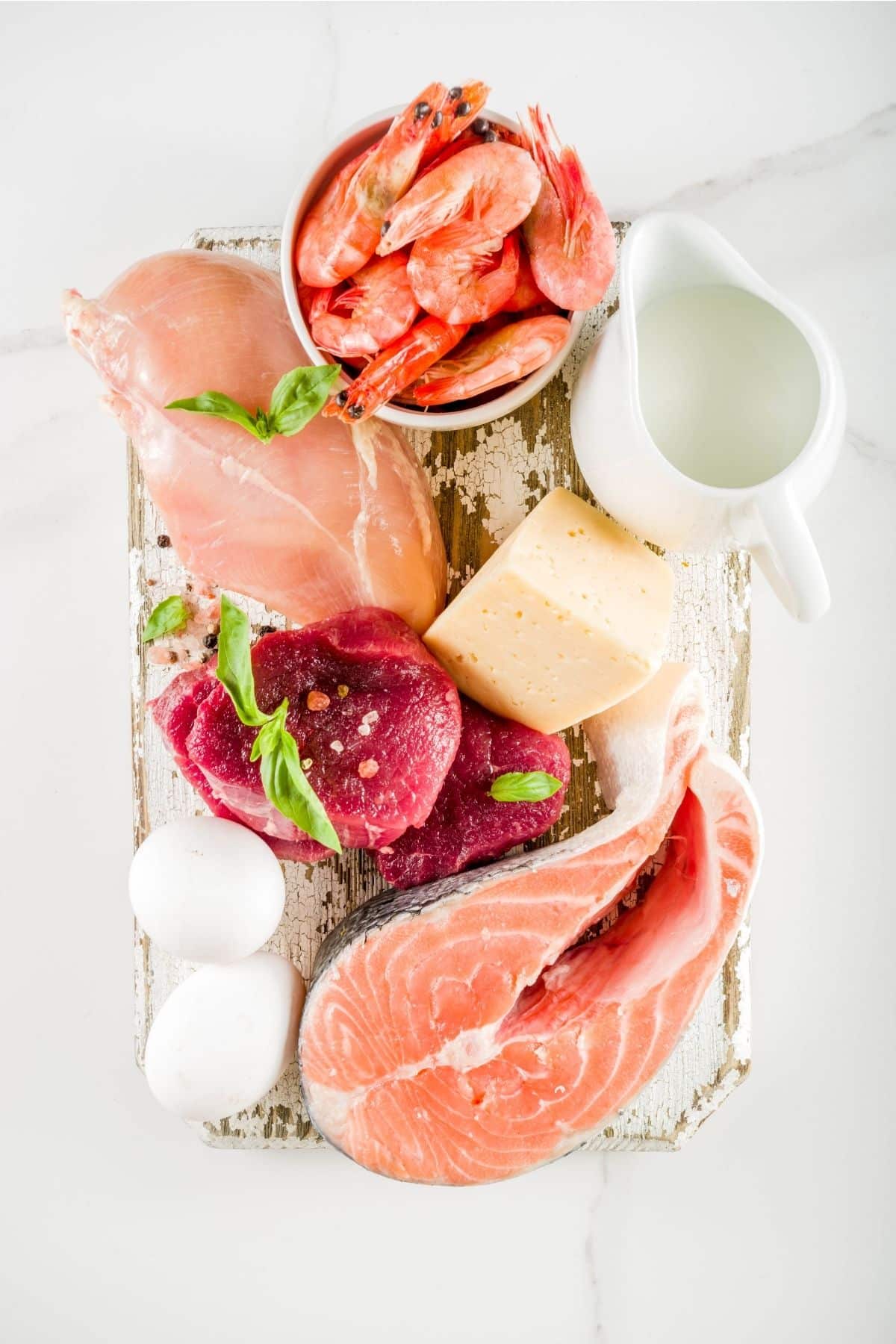
Meat, poultry, and fish will be your most expensive grocery items, so budget accordingly and consider eating sparingly to reduce cost.
It’s better for your health and the environment to have some well-sourced meat in your diet than a lot of factory farmed meat. Choose 100% grass-fed, grass-finished red meat. See my guide to finding local grass-fed meats.
Poultry and eggs are best when pasture-raised. Choose wild game meat over farmed. Fish and shellfish should be purchased wild-caught and sustainably-sourced whenever possible.
Any soy products should be certified organic, as these are heavily genetically modified and sprayed when conventional.
Learn more about the potential dangers of soy products and the safest ways to eat soy.
To save money, consider buying lean meats in bulk from a local source. Frozen meat and fish is also perfectly acceptable. In addition, canned fish is very affordable and nutrient-dense.
Best clean eating protein sources:
- Beef
- Bison
- Chicken
- Eggs
- Fish and shellfish
- Game meats
- Pork products including bacon
- Soy products including tofu and tempeh
- Turkey
Dairy Products & Dairy-Free Milks
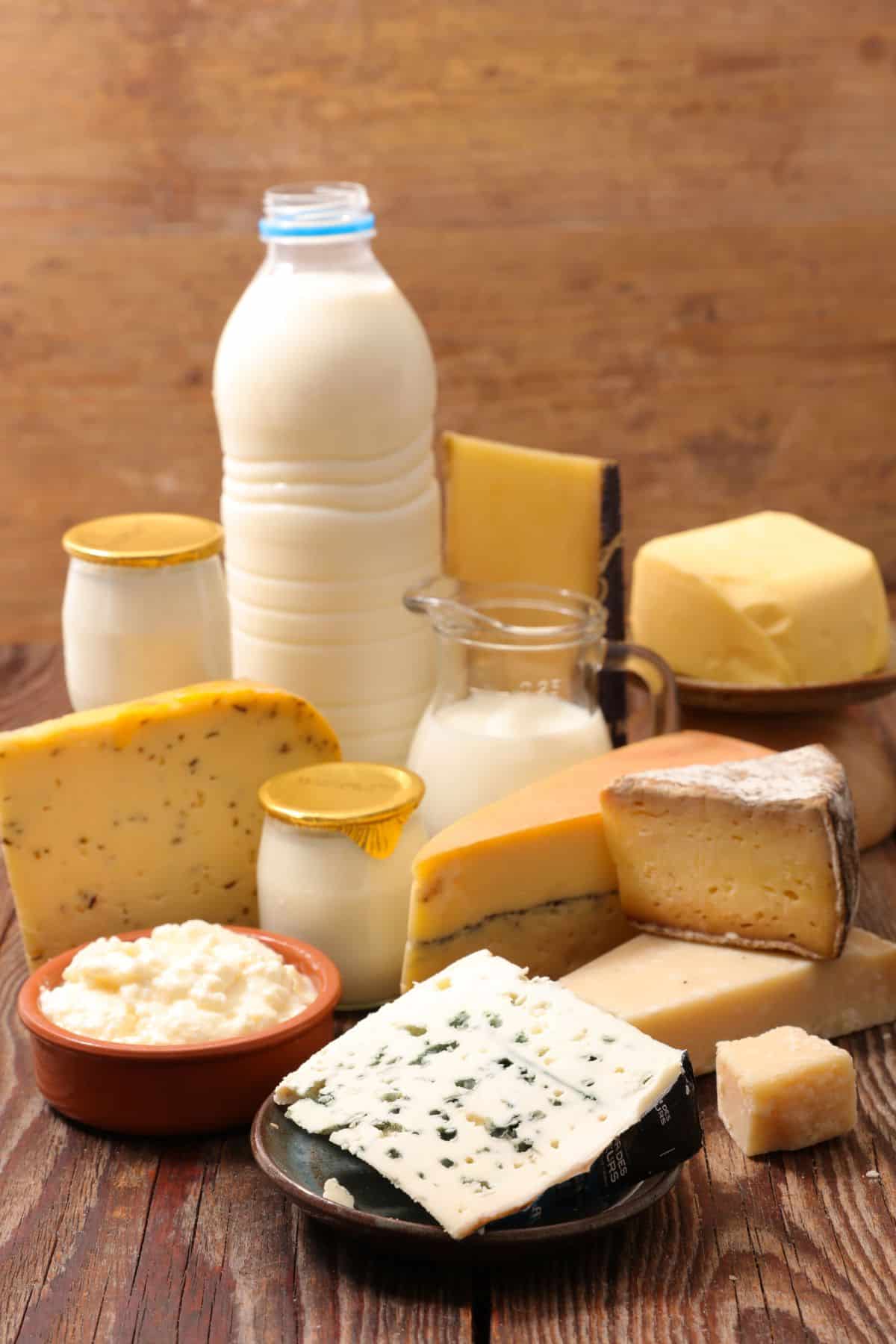
If you choose dairy products, opt for 100% grass-fed and grass-finished whole milk to get the most nutrients.
Making your own dairy-free milk is a cost-effective alternative to store-bought, but if you need to purchase packaged, go for unsweetened options with as few ingredients as possible.
Conventional is generally safe to purchase for dairy-free milk products, except for homemade oat milk which ideally would be made with organic rolled oats.
To save money, consider using dairy-free milk as your daily milk rather than dairy milk. It typically has a much longer life in your refrigerator than dairy does. Save dairy for cheese and yogurt, which is more forgiving with food safety.
You might also want to learn about the health reasons to go dairy-free.
Dairy and dairy-free milk options:
- Almond milk
- Coconut milk and coconut beverage
- Cottage cheese
- Hemp milk
- Kefir
- Milk
- Rice milk
- Soy milk
- Yogurt
Grains & Pseudograins
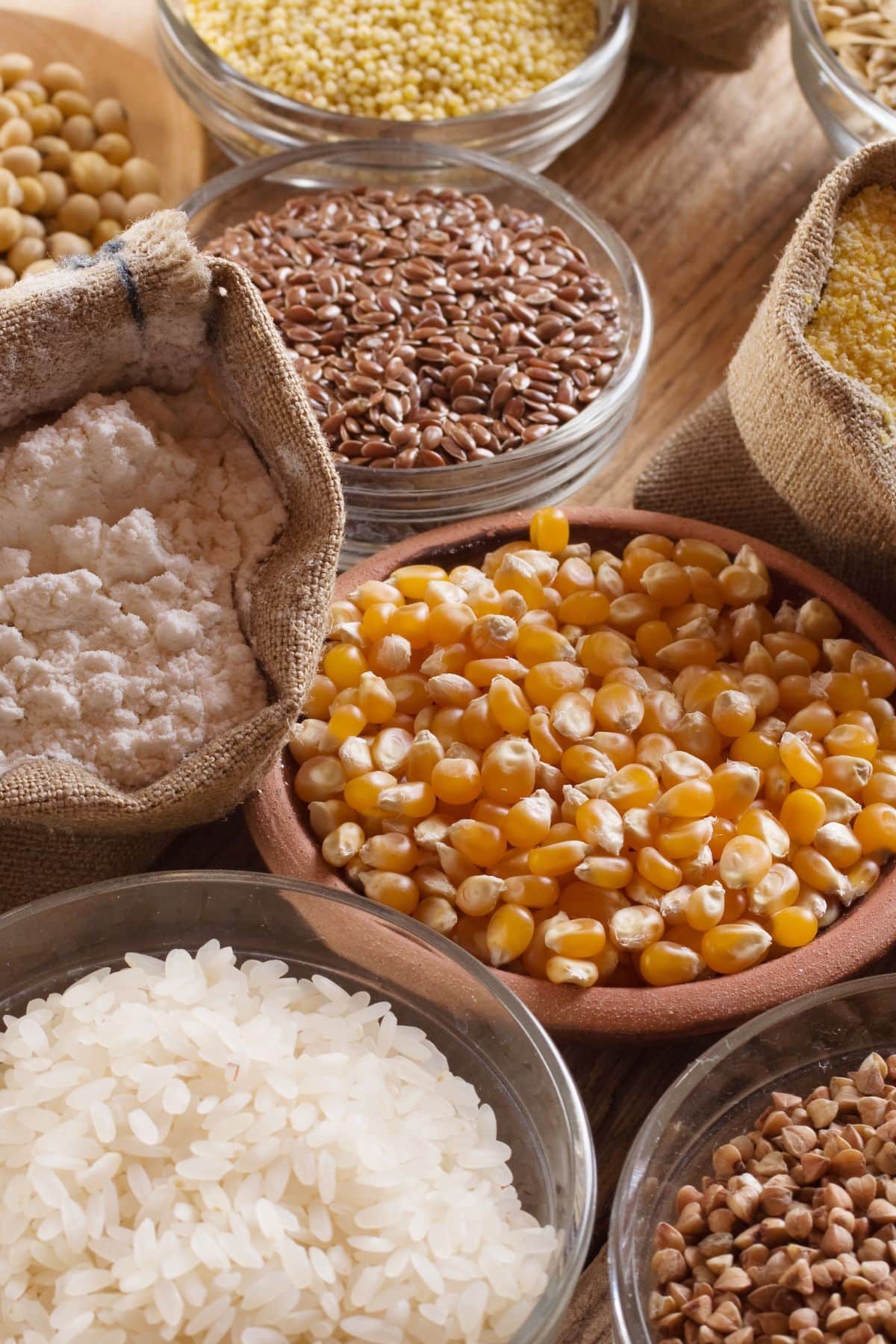
You should purchase these staples organic whenever possible, as they tend to have higher pesticide residues. Look for rice grown in California or India, if possible, for lower arsenic levels.
As with legumes, consider purchasing sprouted varieties of these grains for better bioavailability. Alternatively, sprout or soak them yourself before cooking.
If you are gluten-free, be sure to purchase options that are certified gluten-free to avoid cross-contamination. Learn more about the reasons to consider going gluten-free.
List of gluten-free grains to consider purchasing:
- Amaranth
- Buckwheat
- Corn
- Millet
- Oats
- Quinoa
- White rice
- Brown rice
- Sorghum
- Teff
- Wild rice
If you’re not gluten-free, you can consider adding other gluten-containing grains to your shopping list including:
- Barley
- Rye
- Wheat berries
- Spelt
If you’re looking for healthy bread alternatives, please do check out my full article on that topic.
Nuts & Seeds
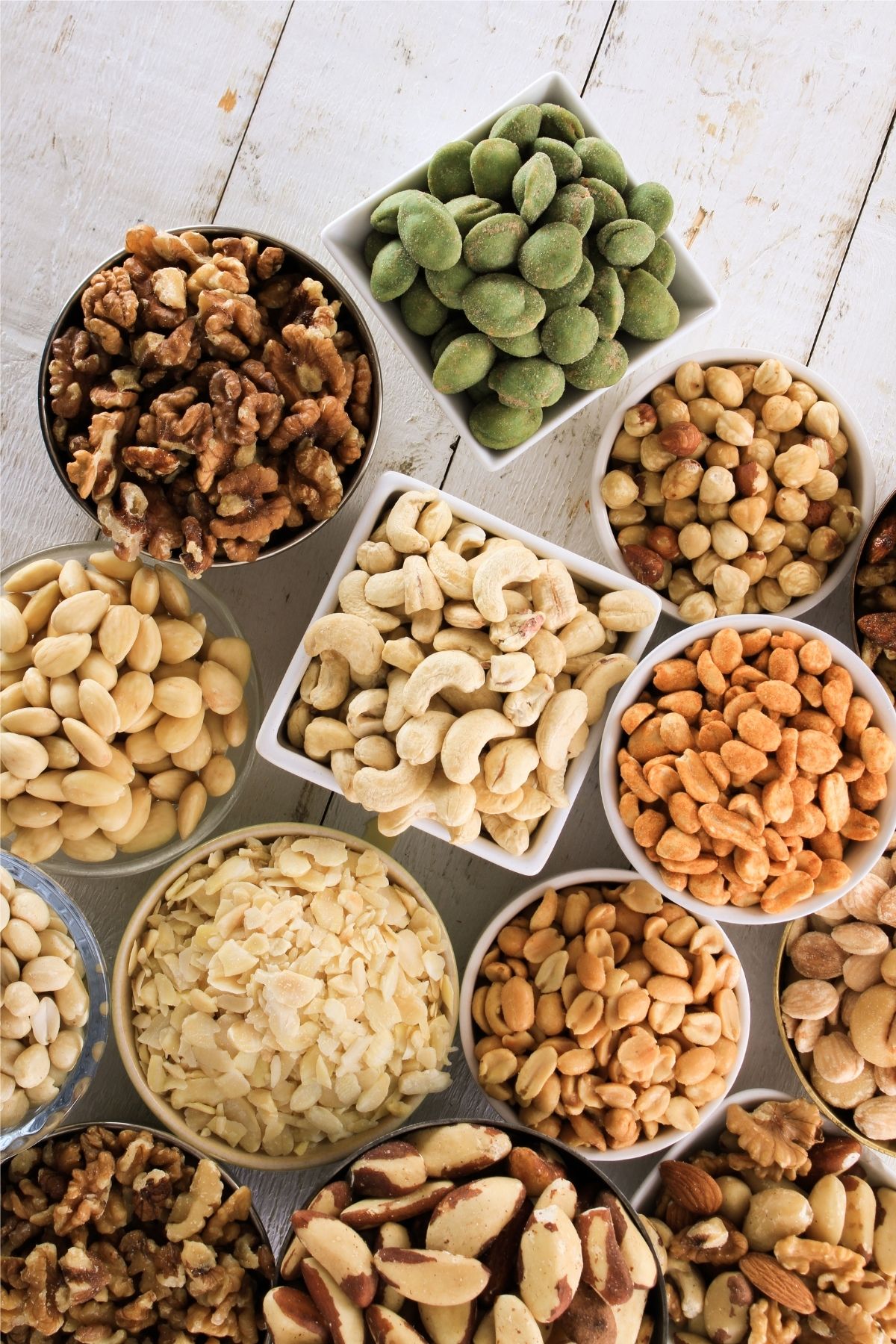
Nuts and seeds are generally safe to purchase conventional, though you may choose to budget for organic to be safer. As with grains and legumes, sprouted is best, but not necessary!
To save keep items fresh, store your nuts and seeds in your refrigerator. They tend to go rancid quickly, so the cold environment can prolong their shelf lives.
You can also include nut butters such as peanut butter as part of a healthy diet. Try to find clean versions with no added oils or sugars.
Clean eating nuts and seeds:
- Almonds
- Brazil Nuts
- Cashews
- Chia seeds
- Flax seeds
- Hazelnuts
- Hemp seeds
- Macadamia nuts
- Pecans
- Pistachios
- Pumpkin seeds
- Sunflower seeds
- Walnuts
Baking Supplies
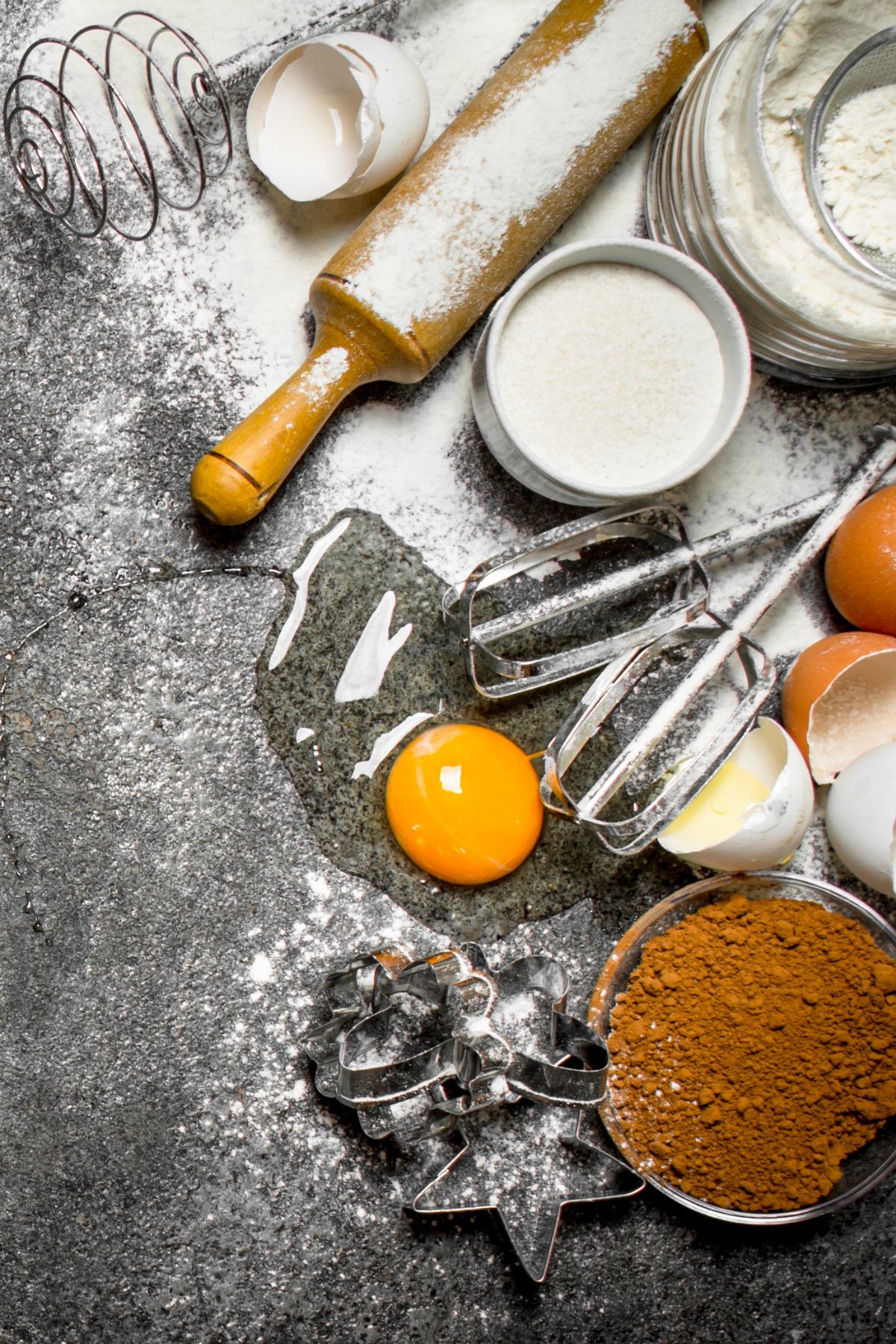
Unless you are baking daily, there’s not much need to buy your baking supplies organic. However, if you bake a lot, you may wish to buy organic flours to avoid contamination with pesticides.
Consider choosing dark chocolate chips to reduce sugar, raw cacao for more nutrients, and local raw honey for the most health benefits.
Sweeteners:
- Blackstrap Molasses
- Coconut Palm Sugar
- Maple Syrup
- Honey
- Brown Sugar
- Cane Sugar
Flours:
- Almond flour
- Cassava flour
- Coconut flour
- Gluten-free baking flour
- Paleo baking flour mix
- Tapioca flour
- Whole grain wheat flour (not gluten-free)
Other baking basics:
- Baking soda
- Baking powder
- Cocoa powder
- Chocolate chips
Fat Sources
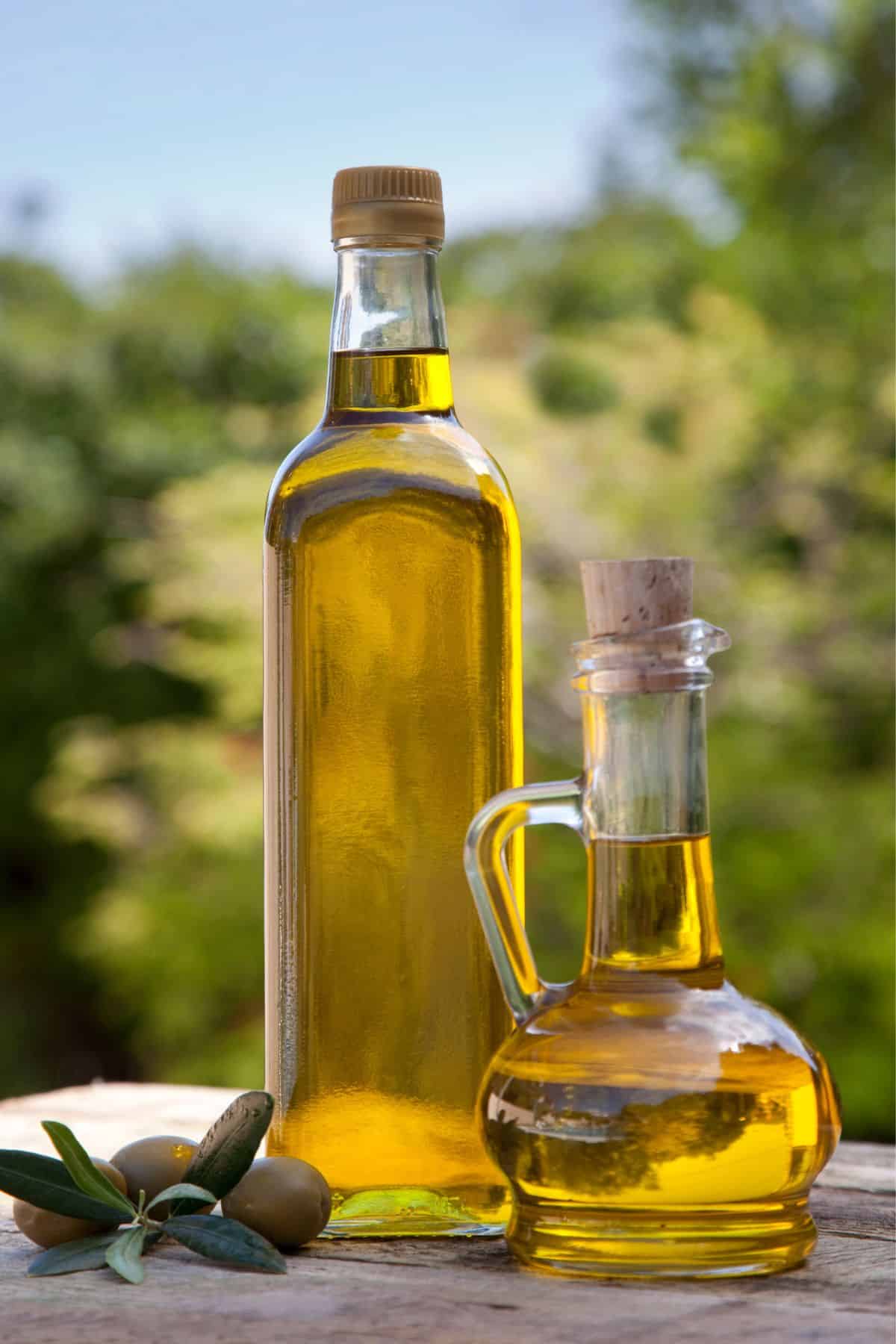
Most oils are fine to purchase conventional as opposed to organic.
Be wary of excessively cheap oils though. Liquid oils like olive oil and avocado oil should ideally be sold in dark glass bottles to avoid rancidity. Local olive oils may not come in dark bottles since they are likely to be fresher.
It’s best to spend your money on high-quality oils, preferably grown in California or imported from Italy or Greece.
Choose 100% grass-fed, grass-finished ghee and butter, and pasture-raised lard.
You can also purchase prepared salad dressings but try to find versions using healthy oils such as olive oil or avocado oil. See my list of the safest oils.
Healthy fat sources to consider including in your kitchen:
- Avocado oil
- Coconut oil
- Ghee
- Grass-fed butter
- Lard
- Olive oil
- Sesame oil
- Walnut oil
Dried herbs & spices
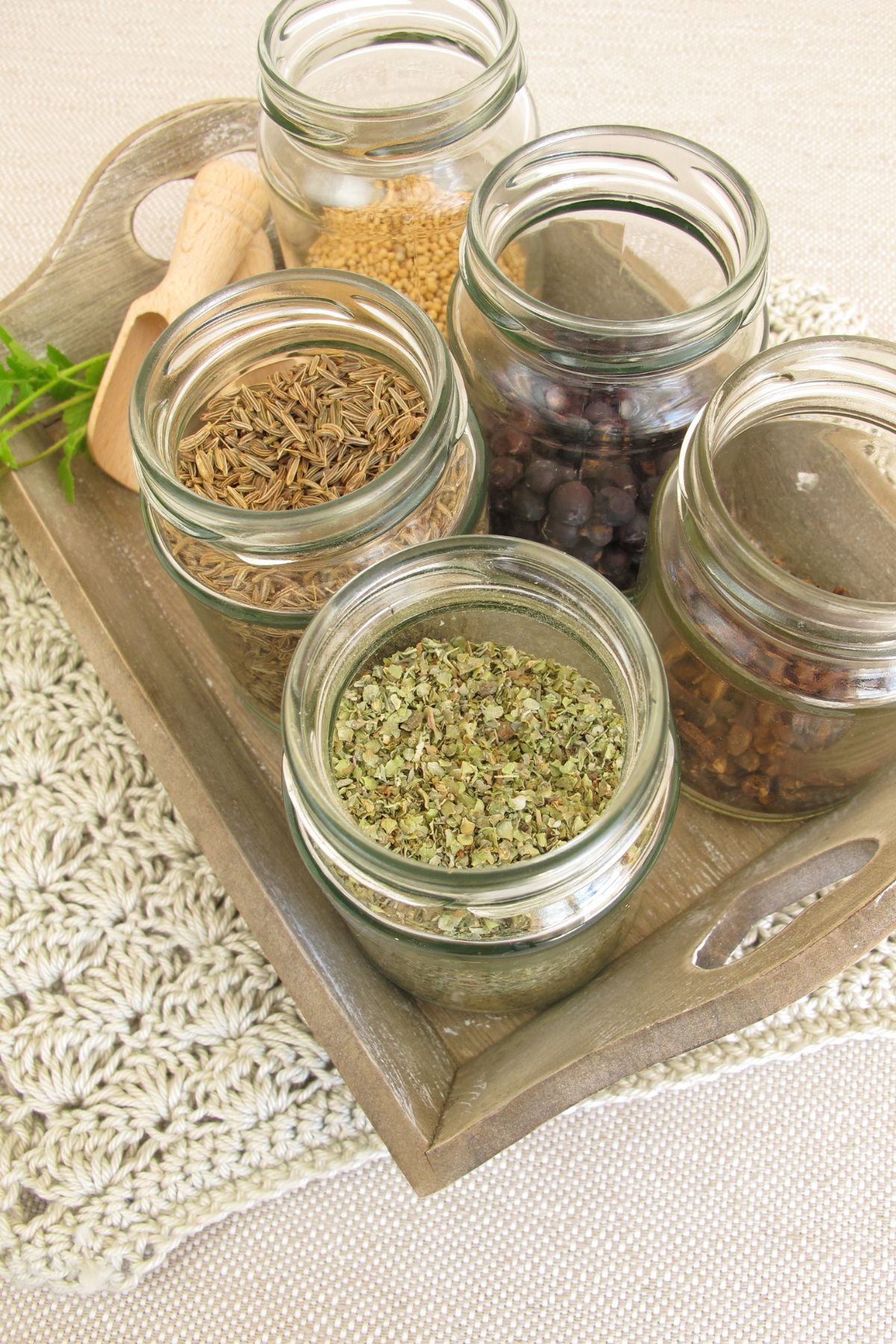
Spices can be pretty pesticide-heavy, so choose organic if you use them often. You can also save money by drying herbs yourself, from leftovers.
Dried herbs and spices to stock up on:
- Basil
- Bay Leaves
- Cayenne Pepper
- Cilantro
- Cinnamon
- Coriander
- Cumin
- Dill
- Garlic Powder
- Mint
- Mustard Seed
- Nutmeg
- Onion Powder
- Oregano
- Paprika
- Parsley
- Pepper
- Rosemary
- Sage
- Sea Salt
- Thyme
- Turmeric
Other Pantry Staples
Choose organic pantry staples with as few ingredients as possible. Steer clear of added sugars, preservatives, oils, or sodium.
Clean eating pantry staples:
- Balsamic vinegar
- Apple cider vinegar
- Coconut aminos
- Soy sauce (contains gluten) or tamari (gluten-free option)
- Hot sauce
- Mustard
- Ketchup
- Marinara sauce
- Nut or seed butters
- Dates
- Gluten-free or grain-free pasta
Snacks
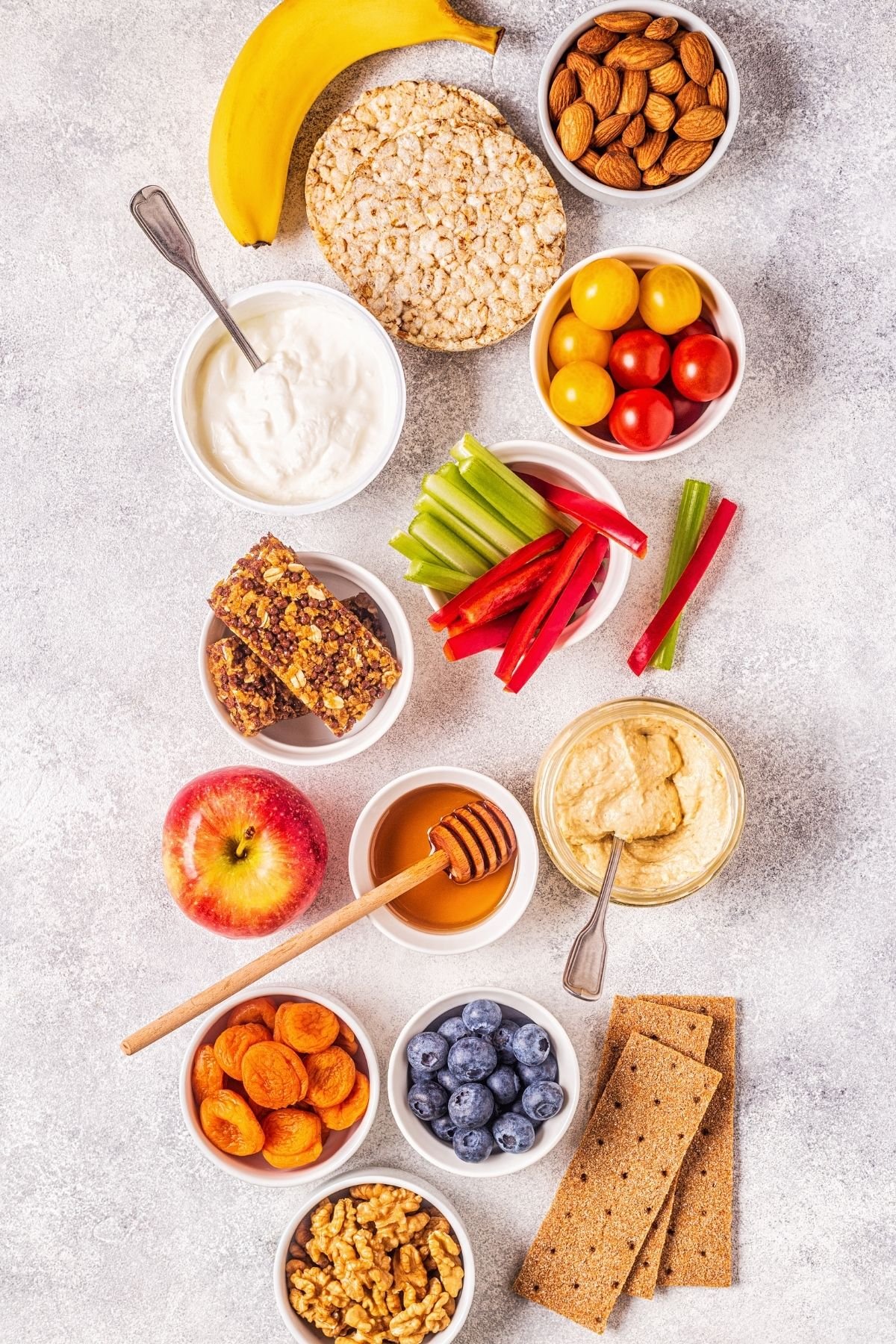
Packaged snacks will quickly eat up your budget, so use them sparingly. Be sure to read your labels to avoid any sneaky added sugar, undesirable oils, or questionable preservatives.
Just like with pantry staples, choose snacks with simple ingredients (have you ever tried frozen grapes for example). Organic doesn’t need to be a priority with these, as you’re not eating them often.
To save money, check out store brands over name brands. Be sure to read your labels to compare, but often, store brands have similar ingredients and are less expensive.
If you prefer to make your own clean eating snacks at home, check out my complete list of the best gluten-free and dairy-free snacks.
Clean eating snacks to consider:
- Crackers
- Dark chocolate
- Dried fruit
- Dried seaweed
- Gluten-free wraps, breads, or baked goods
- Hummus
- Nut and seed butters
- Popcorn
- Salsa
- Grain-free or gluten-free crackers
Healthy Grocery Shopping Tips
Navigating the aisles of the market can be intimidating when you’re trying to eat cleaner. Grocery shopping for healthy goods doesn’t need to be scary or expensive with these tips.
- Avoid packaged goods, such as chips and frozen meals. Most of these aren’t nutrient-dense and they’re often expensive. You’ll want the majority of your diet to be fresh, whole foods you prepare yourself.
- Read the ingredient labels on packaged goods. This is especially important if you have food allergies or intolerances. In general, you’ll want to reconsider anything with added sugar, preservatives, artificial coloring or flavors, and excess sodium.
- Follow a formula when shopping. Usually, you’ll need similar things each time you shop. Choose a few options each for carbohydrates, healthy fats, and proteins. You can then mix and match to create healthy meals throughout the week.
- Choose nutrient dense foods. Eat the most nutritious foods as often as you can to get the most bang for your buck. This means you won’t be wasting your money on foods that don’t offer you the nutrition that your body needs.
See my list of healthy foods to eat every day or see my article on the best foods for fertility.
How to Shop for Healthy Groceries on a Budget?
With skyrocketing food costs, it’s important to plan wisely to save money. Here are some of my best tips.
- Don’t shop when you’re hungry! Going to the store when you are hungry will distort your perception of what you actually need. You’ll be more likely to pick up higher calorie foods (usually junk foods!) and add way more to your cart than you need.Instead, wait until after you’ve enjoyed a full meal to go to the store. This will reduce impulse buys and help you stick to your healthy grocery list.
- Meal plan and create a list. This ensures that you’re only buying what you need and that you will use everything you buy rather than waste food. I like to make a 3-day meal plan and just shop for what is needed for those recipes. Use this list of the best gluten-free dairy-free recipes as a start.
- Choose conventional when you can. The upcharge on organic goods adds up, so only choose organic for the Dirty Dozen. You may also try buying in-season produce which can often help keep costs lower.
- Compare prices at a few different stores in your area if you have time. It’s helpful to buy most of your items at the cheaper store, then head to the specialty stores only for items you can’t find elsewhere. You can also try shopping at warehouse stores for bulk items like snack foods.
See all my tips for eating healthy on a budget.
FAQs
Some of the healthiest foods to include in your clean eating diet include: dark leafy greens, berries, fish, eggs, lean protein, onions, sweet potatoes, cruciferous vegetables like broccoli, nuts and seeds, and avocados. Read more in my article on healthy foods to eat daily.
And, be sure to remember that everyone is different. For individualized support, please consult your healthcare provider.
To create a balanced grocery list, prioritize a mix of colorful fruits and vegetables, lean proteins, whole grains, and healthy fats. Stick mostly to the outer perimeter of the grocery store where fresh produce and meats are located, but don’t neglect inner aisles for whole grains and spices. Always check nutrition labels to avoid high-sugar, high-sodium, and overly processed foods.
Healthy Grocery List With Unprocessed Foods (Downloadable PDF)
Want this clean eating healthy grocery list in a PDF that you can print or save to your phone to take with you to the store?
New to Clean Eating? Don’t Miss These Resources!
Conclusions
This comprehensive list of clean eating food and pantry staples is designed to help you with your grocery shopping. Try to choose unprocessed, whole foods over packaged and highly-processed foods. With this list, you’ll be set on stocking your personal clean eating kitchen!
Don’t forget to join my newsletter list to get exclusive clean eating recipes and tips. The newsletter is 100% free with no spam; unsubscribe anytime.
About the Author: Carrie Forrest has a master’s degree in public health with a specialty in nutrition and is a certified holistic nutritionist. She is a top wellness and food blogger with over 5 million annual visitors to her site. Carrie has an incredible story of recovery from chronic illness and is passionate about helping other women transform their health. Send her a message through her contact form.
Note: this post is for informational purposes only and is not intended as medical advice. Please consult your healthcare provider for recommendations related to your individual situation.



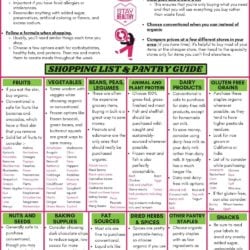
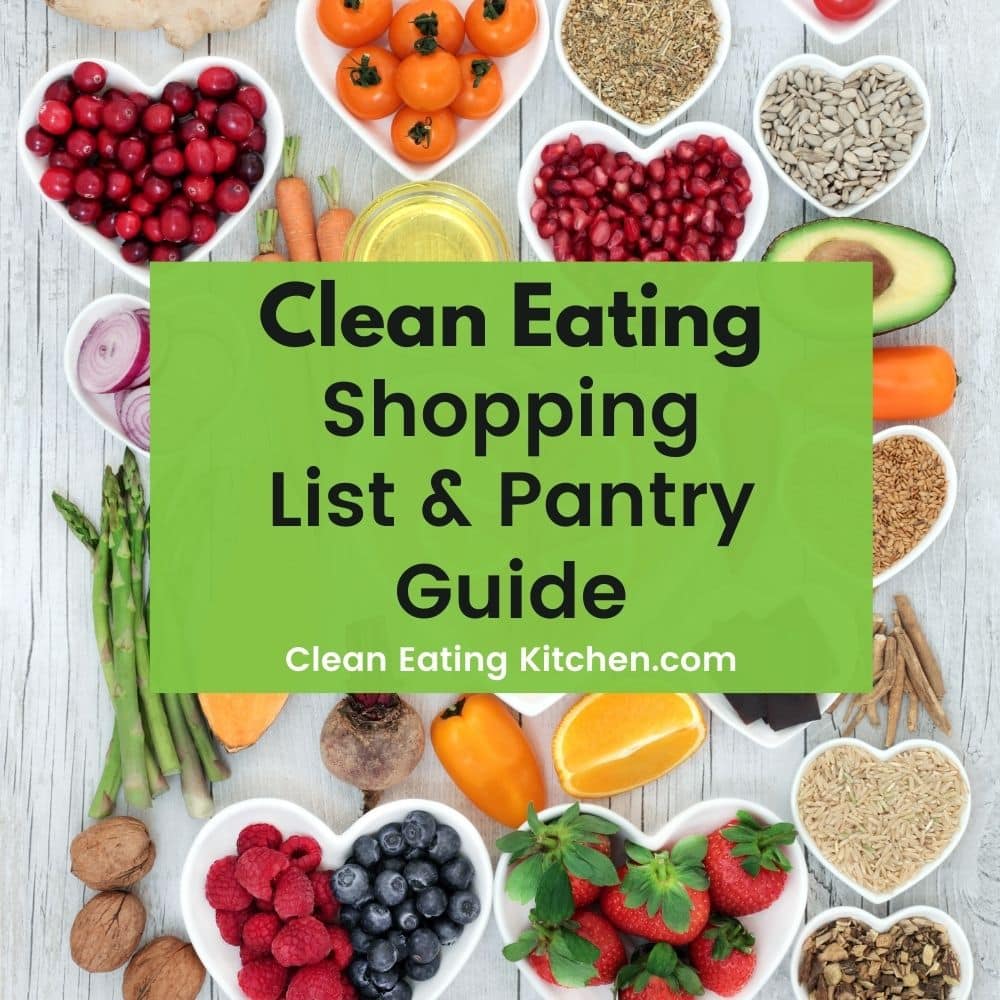
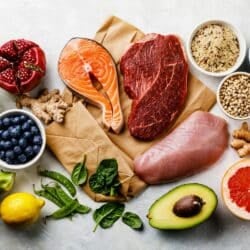
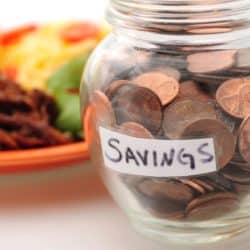
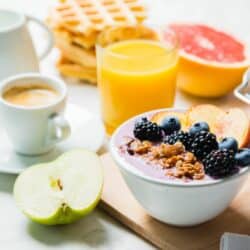
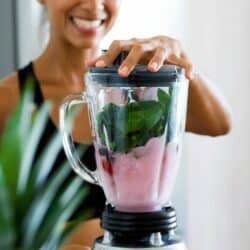


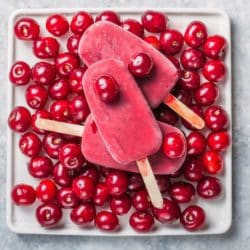
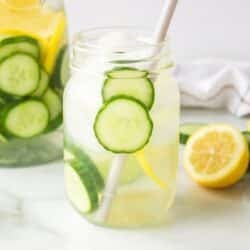
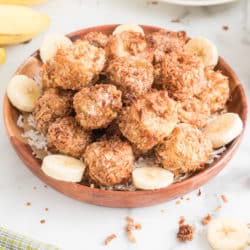









Thank you for all the information.
Can’t find list – 🙁
You can use the table of contents to see where the PDF is located (you have to sign in to get it). LMK if you can’t find it! 🙂
I thought soy sauce contained gluten. May want to add a disclaimer next to it as well. Thanks for the very helpful list!! This is incredible.
done!
These lists are most helpful for me. I appreciate the idea of lists, it makes life so much more easier. Thank You most sincerely.
A lot to take in, but I really like your overall approach and I try to follow a similar set of rules when buying & making food. Should’ve started this approach much earlier in life! Now at 73 after losing a kidney (okay – ’cause I got a spare!), I finally understand what the Doctor actually meant about “cut down on salt”. Of course, they never say anything about sodium nor to read the labels of can goods OR Restaurant Food. We do not go out to eat often, but when we do I go online to check out sodium levels. Applebys had a regular order of Fish & Chips – 3180mg Sodium for 1 serving! I believe if I had started cutting back on all the white stuff (Sugar, Sodium & flour – especially the 1st 2) at the age of 50, my body would be in better shape today. I am adding this note to ask you to include more emphasis on reading all labels for Sodium content & to find lower sodium goods or make it yourself e.g. fresh & boiled beans do not have much if any sodium! Especially for anyone after the age of 50. Lower sodium = Lower blood pressure, lower CKD! Also been lactose intolerant since I was 35, used to try the lactese pills or lactose free milk, Now I feel better (and my 1 kidney is happier) because I eat dairy free. The cows appreciate that too! Thanks for all your info and recipes!!!!!
No matter what I click on, I am not able to find the “printable pdf list”.
Have you joined my email list? It’s part of my clean eating quick start guide when you sign up (it’s free): http://eepurl.com/bhuYxL
I did the same thing, I joined the email list and I still cannot find where to print the PDF from. If I hover over it, it blurs out.
It will come by email. 🙂
Some really great information here , really appreciate it , do you have any information for UK and Europe please or when to access this from in regards to the p on foods as I am based in the uk . Thank you
which foods do you need help with finding? Almost everything translates from US to Europe.